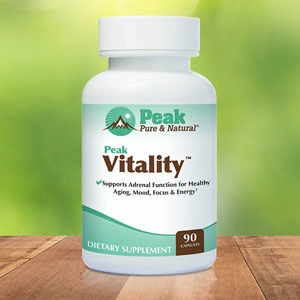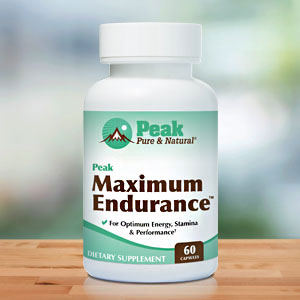Get Easy Health Digest™ in your inbox and don’t miss a thing when you subscribe today. Plus, get the free bonus report, Mother Nature’s Tips, Tricks and Remedies for Cholesterol, Blood Pressure & Blood Sugar as my way of saying welcome to the community!
The secret to staying out of the hospital

The findings I’m about to share with you may not surprise you.
After all, it makes sense that staying fit can keep you from landing in the hospital, right?
But like with most “obvious” things, scientists are always looking for more proof.
Frankly, I think they do this so we’ll be convinced to put their findings into action.
And when the findings are about the benefits of exercise, well, let’s face it — a lot of us need some extra convincing on that score!
Does aerobic fitness equal fewer hospital stays?
A study conducted at the University of Gothenburg in Sweden has uncovered a promising link between aerobic fitness and reduced hospitalizations.
And let me tell you, this was some substantial data…
A total of 91,140 participants underwent two health assessments as part of an occupational health service.
These assessments included bicycle fitness tests, measurements of weight, height and blood pressure, as well as lifestyle and health questionnaires.
The researchers compared changes in aerobic fitness from these assessments with subsequent hospital admissions data. They focused on both general hospitalizations and those specifically related to cardiovascular disease over an average period of seven years.
Was there a link between aerobic fitness and landing in the hospital?
A clear link
The link between aerobic health and hospital stays was clear. It was even more pronounced among participants with a history of hospitalizations.
After accounting for factors like diet, smoking,and stress levels, here’s what the researchers found:
- General hospitalizations. Participants who maintained their aerobic fitness over the seven-year period had 7 percent fewer hospitalizations for any reason. Those who improved their overall fitness had 11 percent fewer hospitalizations than those whose fitness declined.
- Previous hospitalizations. The impact was even greater among participants with a history of hospitalizations. In this group, maintaining or improving aerobic fitness led to a 14 percent reduction in hospitalizations during the seven-year follow-up period.
- Cardiovascular disease. Maintaining aerobic fitness resulted in 9 percent fewer hospitalizations related to cardiovascular disease, while improving aerobic fitness led to a 13 percent reduction.
And the most impressive finding was a 20 percent reduction in cardiovascular disease-related admissions among previously hospitalized participants who maintained or increased their aerobic fitness.
Start now, even if you’ve been hospitalized in the past
You don’t need to join a gym or run a marathon to take advantage of these findings. There are plenty of ways to “up your game” when it comes to being active, and especially when it comes to being more aerobically fit.
- High-intensity interval training, or HIIT, is a form of exercise that requires no special equipment, classes, or skill. A treadmill and weights can help you “up” your game, but plain old walking and running will have the same positive effects.
- Sprint interval training may be right for you if you need to squeeze some beneficial exercise into a tight schedule.
If you’ve still got your favorite aerobicize video from the 80s, break it out.
Of course, just walking at a good clip builds aerobic strength. In addition to keeping you out of the hospital, there’s proof that a good, brisk walk could be the key to slower aging.
And since we’re talking about staying out of the hospital, a regular walking practice can protect against heart disease and reduce the risk of breast cancer.
So you see, it’s not that hard to become fitter than you are now, and reduce your risk of landing in a hospital bed.
Editor’s note: There are perfectly safe and natural ways to decrease your risk of blood clots including the 25-cent vitamin, the nutrient that acts as a natural blood thinner and the powerful herb that helps clear plaque. To discover these and other secrets of long-lived hearts, click here for Hushed Up Natural Heart Cures and Common Misconceptions of Popular Heart Treatments!
Sources:
Fewer hospital admissions when people are fitter — Eureka AlertMaintaining or increasing cardiorespiratory fitness is associated with reduced hospital admission rate — European Journal of Preventive Cardiology














